One of the earliest descriptions of a dieselpunk world was written by “Piecraft” in 2006. He envisaged an alternate 1950s “where the Great Depression never arrived and World War II is still being fought as a prolonged Cold War.”
Japan continues its progress toward technological modernization, developing the earliest computers and terminals. Nazi scientists continue experimenting by taking the route of biotechnology, sparking off a genetic revolution of bio-mods, clones and organ harvesting, while the Americans and British take both of these technologies to develop mind-control devices, spawning man-machine interfaces and sparking the atomic-powered machine age.
Let’s explore this diesel-fueled world in the first installment of a new series we’ll call worldbuilding.
We’ll draw on Len Deighton’s SS-GB (1978) and the BBC serialization (2017, our review here), Philip K. Dick’s The Man in the High Castle (1962) and the Amazon drama series (2015-present, review here), Robert Harris’ Fatherland (1992), Allen Steele’s V-S Day (2014, review here), the video game Wolfenstein: The New Order (2014), the art of Stefan Prohaczka and Sam van Olffen, and the real-life Nazi Generalplan Ost, among other sources.
Britain makes peace
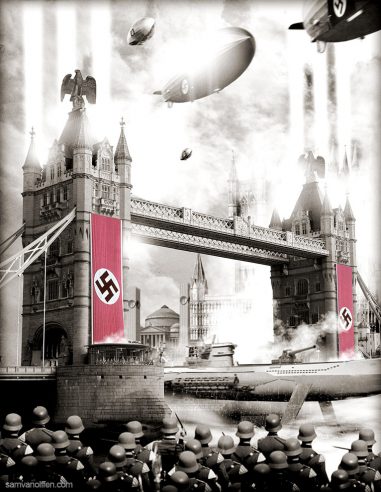
We deviate from our timeline during the Battle of Britain. The Luftwaffe is able to destroy the Royal Air Force. Nazi Germany successfully carries out Operation Sea Lion and occupies the south of England.
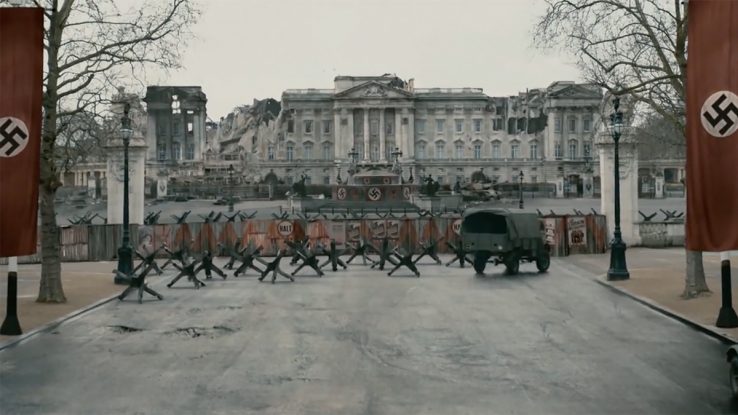
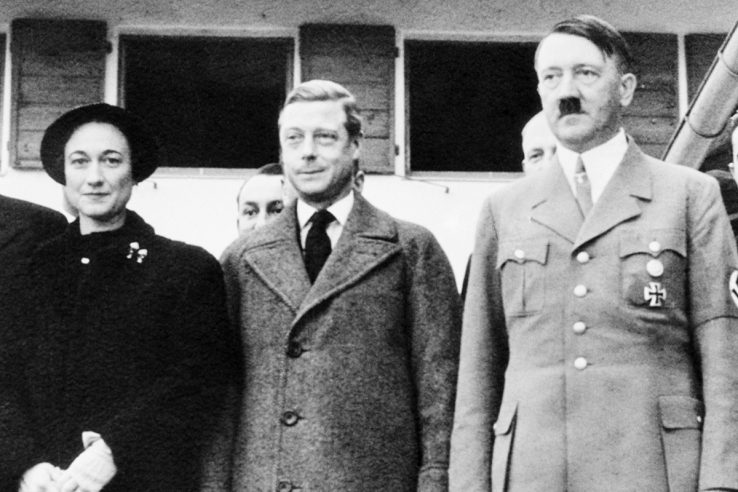
With London on the verge of being surrounded, King George VI and his family flee to Canada. Winston Churchill is arrested and shot. The Nazis restore Edward VIII to the throne, who negotiates the island’s surrender. India refuses to recognize a Nazi puppet as emperor and declares its independence. The remaining British Empire recognizes Elizabeth as queen when Edward’s brother George dies in 1952.
Click here to learn how the Nazis planned to invade Great Britain.
Turkey joins the Axis

With Britain out of the war, but the British and French still fighting in Iraq and Syria, Turkey’s generals spot an opportunity to restore their country to its former glory.
President İsmet İnönü, who had kept Turkey neutral, is ousted in a military coup and replaced with a pro-Axis junta. It allows the Germans to use Turkish territory to open a second front against the British in Egypt and support the conquest of the Caucasus from the south. In exchange, Turkey gets Armenia, Kurdistan and Mesopotamia.
Britain and the Soviet Union are forced to withdraw from Iran, which they had occupied preemptively in 1941. Mohammad Reza Pahlavi, the young shah, signs a nonaggression pact with Germany, which the latter breaks only months later to use northern Iran as a staging ground for its encirclement of the Caspian Sea.
Click here to learn about Hitler’s feared invasion of the Middle East.
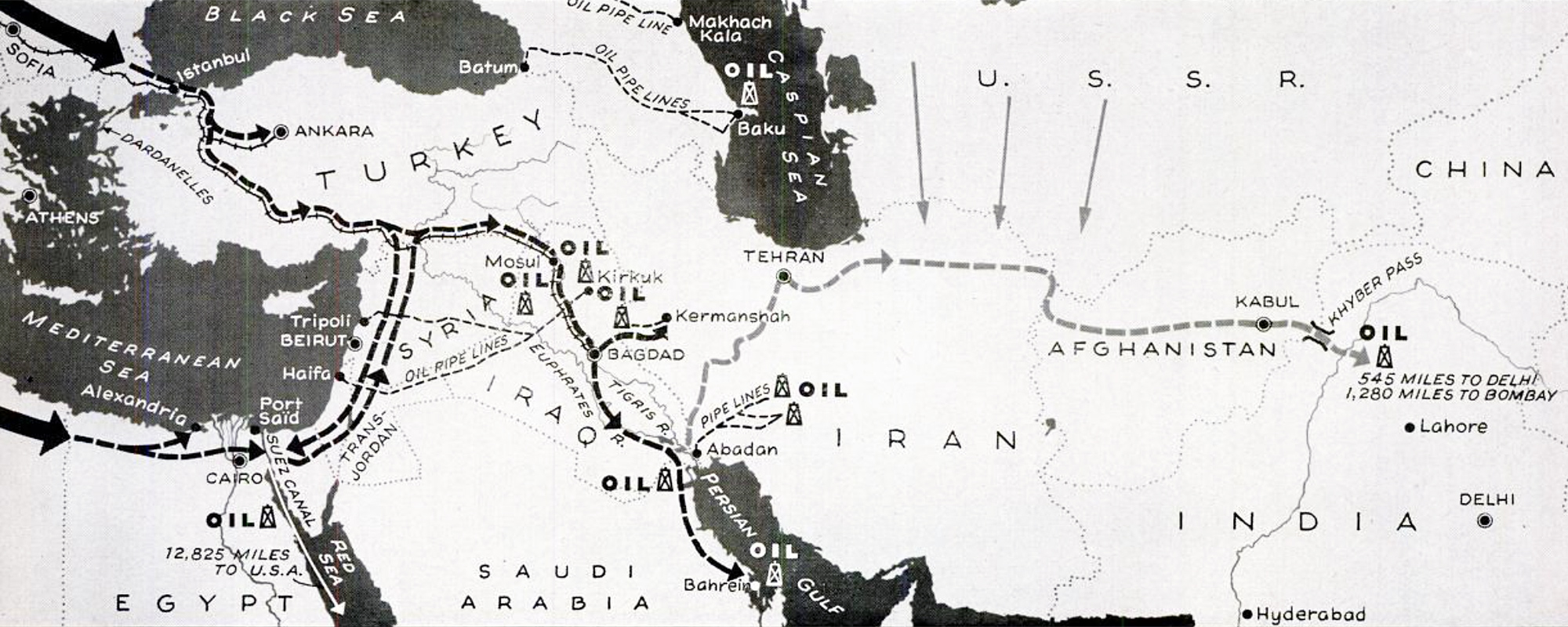
Germany colonizes the East

With Germany in control of southwest Russia, including the oil fields of the Caucasus and the Volga Delta, it can out-wait the Red Army during the winter of 1942-43 and seize Stalingrad and Moscow in the spring.
Joseph Stalin and the Soviet government flee first to Kuybyshev and then to Omsk, from where they continue to lead a guerrilla war in the Ural Mountains. Without the bulk of their territory, people and resources, though, it is a hopeless struggle.
The Nazis reorganize Eastern Europe into four Reichskommissariaten, each largely cleansed of ethnic Slavs and made ripe for German settlement: Ostland, comprising the Baltics and the former Belarus; Ukraine, extending eastward to the River Volga; Moskowien in the northeast and Kaukasus in the south. The Crimea becomes part of the Reich itself.
Despite land being freely available to ethnic Germans, resettlement proves less popular than the regime had anticipated. With forced labor freeing Germans from hard work, only fanatics, many of them in the SS, dream of leaving the comforts of the Reich behind to become Wehrbauern in the East.
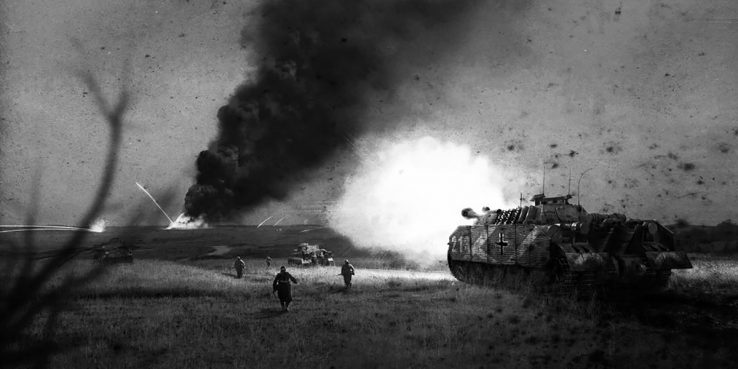
Destruction of New York


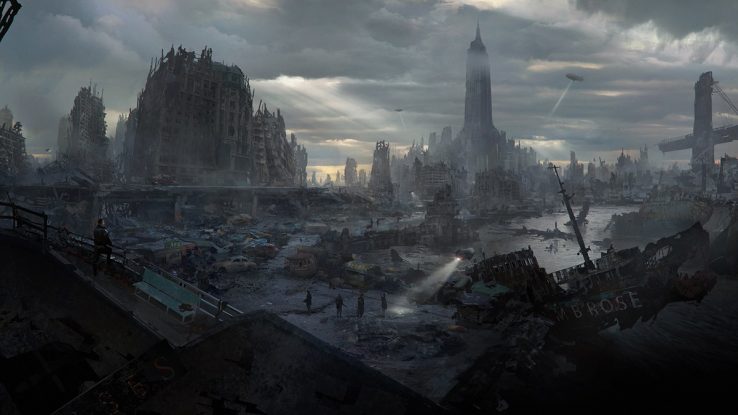
Even though Britain has been defeated and the Soviet Union is reduced to a rump state in Siberia, America continues to fight — until the Germans drop the Bomb.
In the morning of April 20, 1945 — the Führer‘s 56th birthday — two Messerschmitt Me P.08.01 flying wings detonate what the Germans call the Heisenberg Device over Manhattan. Around one million people die instantly. Tens of thousands more perish in the aftermath from burns and radiation poisoning. President Rexford Tugwell, who succeeded Franklin Roosevelt in 1940, agrees to negotiate America’s surrender at a peace summit in Iceland.
Neither Germany nor Japan has designs on the continental United States. Japan does demand America’s Pacific possessions, including Hawaii, while Germany formalizes its influence in South America in the Reykjavík Treaty.
Although now at peace with the Axis powers, America continues to clandestinely support the remnant of the British Empire, China and the Soviet Union.
British Remnant
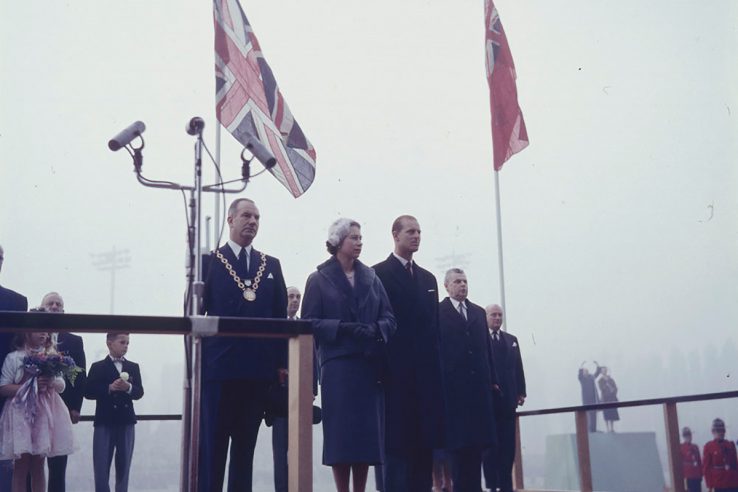
Britain’s dominions — Australia, Canada, Ceylon, Newfoundland, New Zealand, South Africa — have become independent states, as have Kenya and Rhodesia, which house many refugees from European Britain. All recognize Elizabeth II as head of state. The remaining colonies in Africa and the Caribbean are ruled by the British government-in-exile, led by Admiral Conolly Abel Smith from Ottawa.
India’s independence was a blow to British prestige, but it freed up troops for the defense of Burma under Lord Louis Mountbatten. His hope was to retake Malaya and Singapore next, but with America out of the war after the nuclear attack on New York, and the Soviet Union unable to open a second front in Manchuria, those plans had to be postponed indefinitely.
Greater Finland
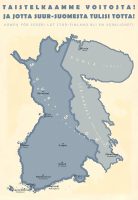
Finland defeated the Soviet Union in the Winter War of 1939-40 and was rewarded by the Nazis with control of the Kola Peninsula and Karelia.
Like its neighbor Sweden, the country seeks an equidistant position for itself between Germany and the United States. But the closeness of Germany, and the American exit from the war, mean it must often defer to Berlin.
The Nordics’ official neutrality is useful to all powers, though, as it gives them a venue for diplomacy and a way to circumvent trade embargoes.
Festung Jotunheim
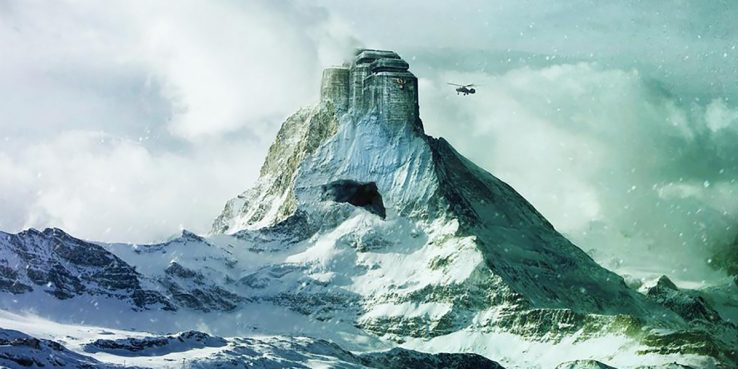
Norway is firmly under Nazi rule. The country hosts one of the most far-flung and secretive bases of the Reich: Jotunheim, named after the homeland of the giants in Norse mythology.
Empire of the Sun

Japan controls much of East Asia as well as most islands in the Pacific, including the formerly American Aleutian Islands and Hawaii, the Kamchatka Peninsula, the Kuril Islands, Karafuto (formerly Sakhalin), Manchuria, Korea, coastal China, Formosa (Taiwan), Indochina, the Philippines. Plaek Phibunsongkhram’s Thailand and Sukarno’s Indonesia (the former Dutch East Indies) are nominally independent but in reality subjugated to Tokyo. Pridi Banomyong leads the Free Thai Movement from Burma.
Japan still eyes Australia, Burma and India. It has little interest in Siberia but occasionally engages in border skirmishes with the Soviets to keep the Germans happy. Communists continue to wage a guerrilla war in the Chinese hinterland.
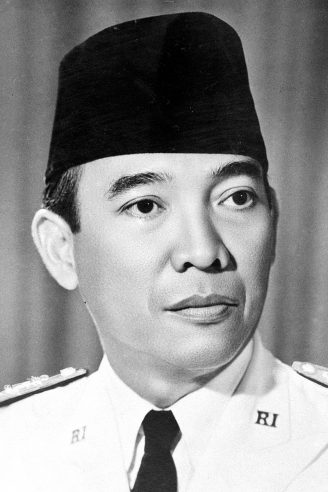
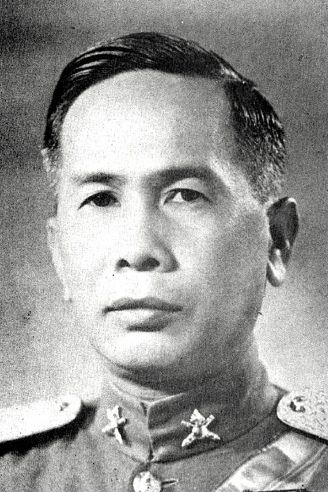
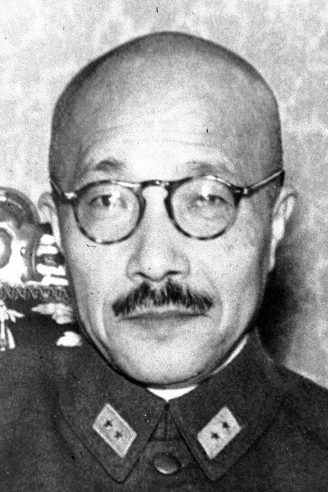
Japan got the atomic bomb from Germany in return for the submarine aircraft carrier. Relations between the two Axis powers are strained, however. Japan doesn’t trust the Germans, who consider all Asians racially inferior.
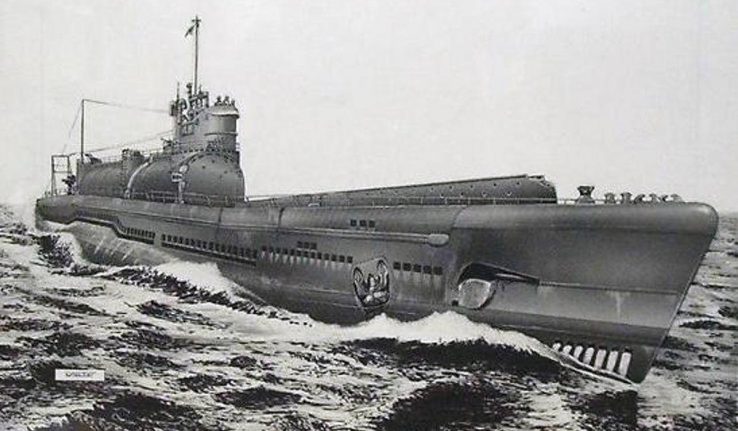

Democracy in America
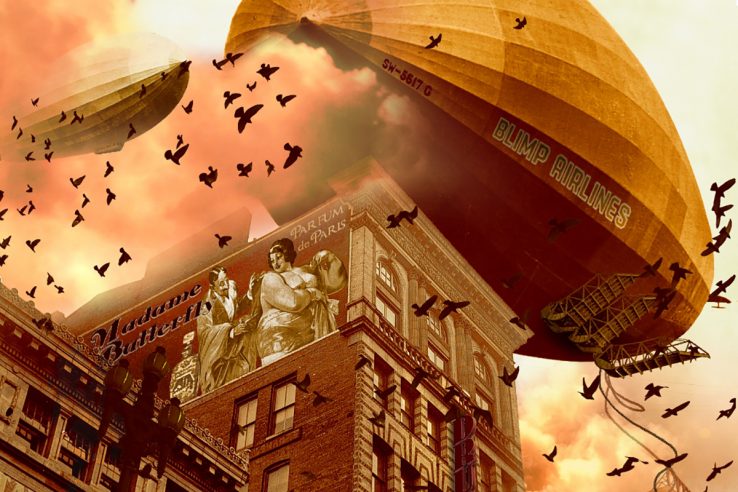
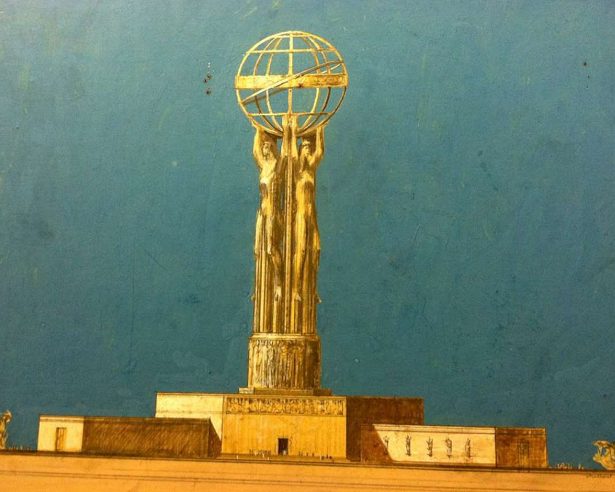

With New York gone, America’s economic and cultural life shifts to Chicago, Detroit, Philadelphia and Los Angeles. Without the interruption of the Great Depression, art, architecture, fashion and technology have progressed steadily from the Roaring Twenties, although the Cold War with Nazi Germany and Japan is giving way to more austere styles.
A Monument to Democracy, designed by Millard Sheets, graces the Port of Los Angeles. Like the Statue of Liberty before it, it holds out the promise of a better future for the oppressed peoples of the world.
Click here for more unbuilt Los Angeles and here to learn about the fashion of the 1930s.
World Capital Germania
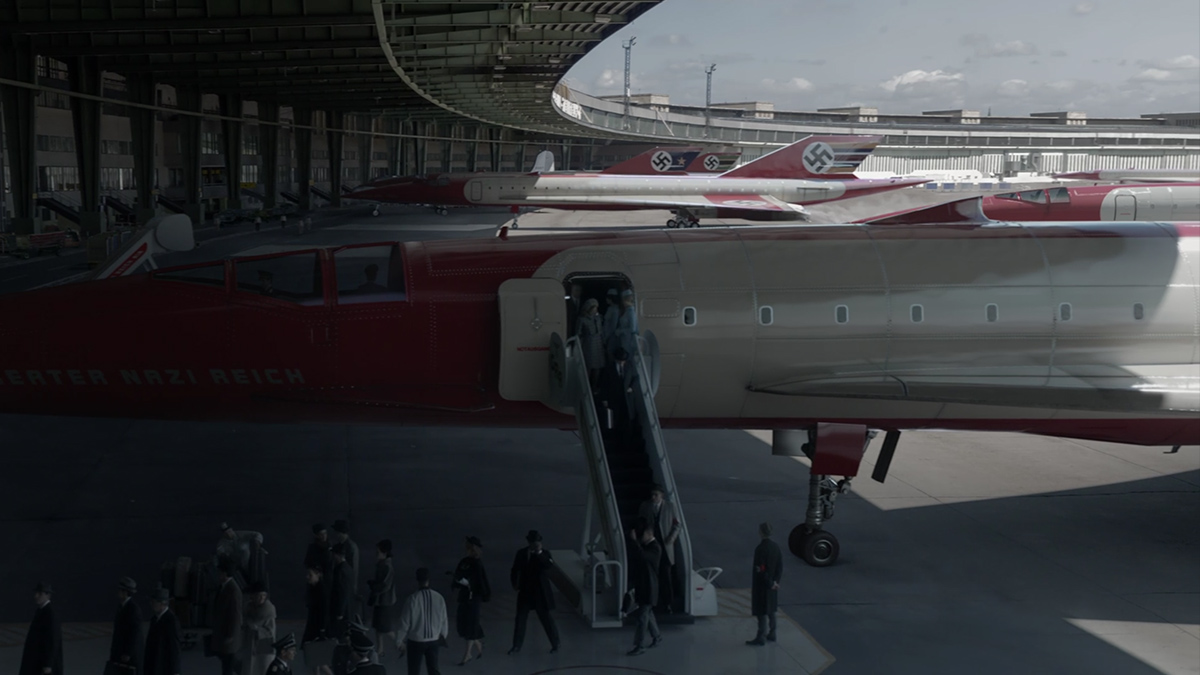
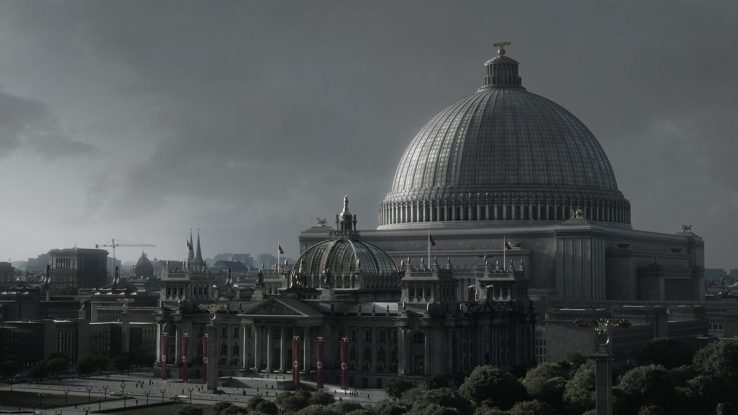
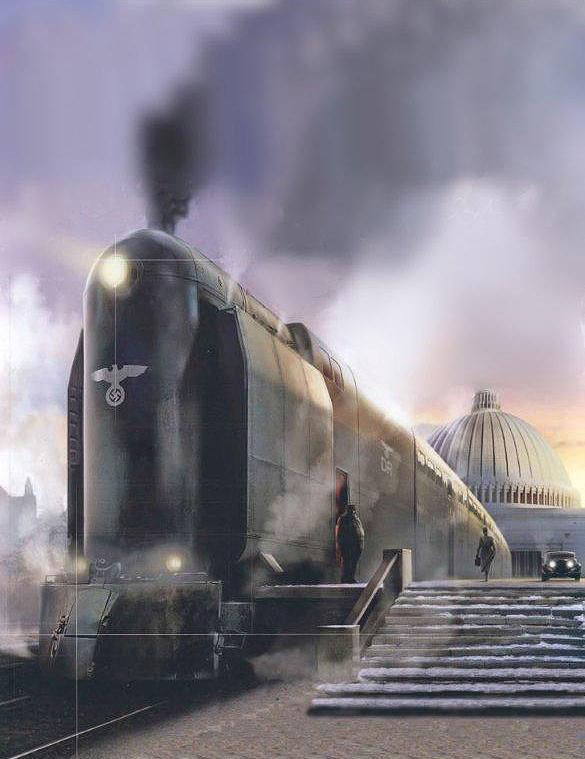
With the war effectively over, Hitler can concentrate on his hobbies: architecture and trains.
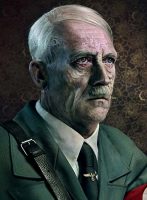
The former involves the total reconstruction of Berlin into the world capital of Germania. Designed by Albert Speer, Hitler’s chief architect, Germania was meant to convey the greatness of the German people, but it turned into a dud for the German people living in it.
Speer did not believe in traffic lights, nor was he a big supporter of trams. Germania has excellent subways, but its denizens tire of going underground. It’s not just the metro; pedestrians are forced into tunnels every time they want to cross one of the city’s ridiculously broad streets and in the city center enormous towers block out the sun altogether.
Click here to learn more about Hitler’s nightmare capital of the world.
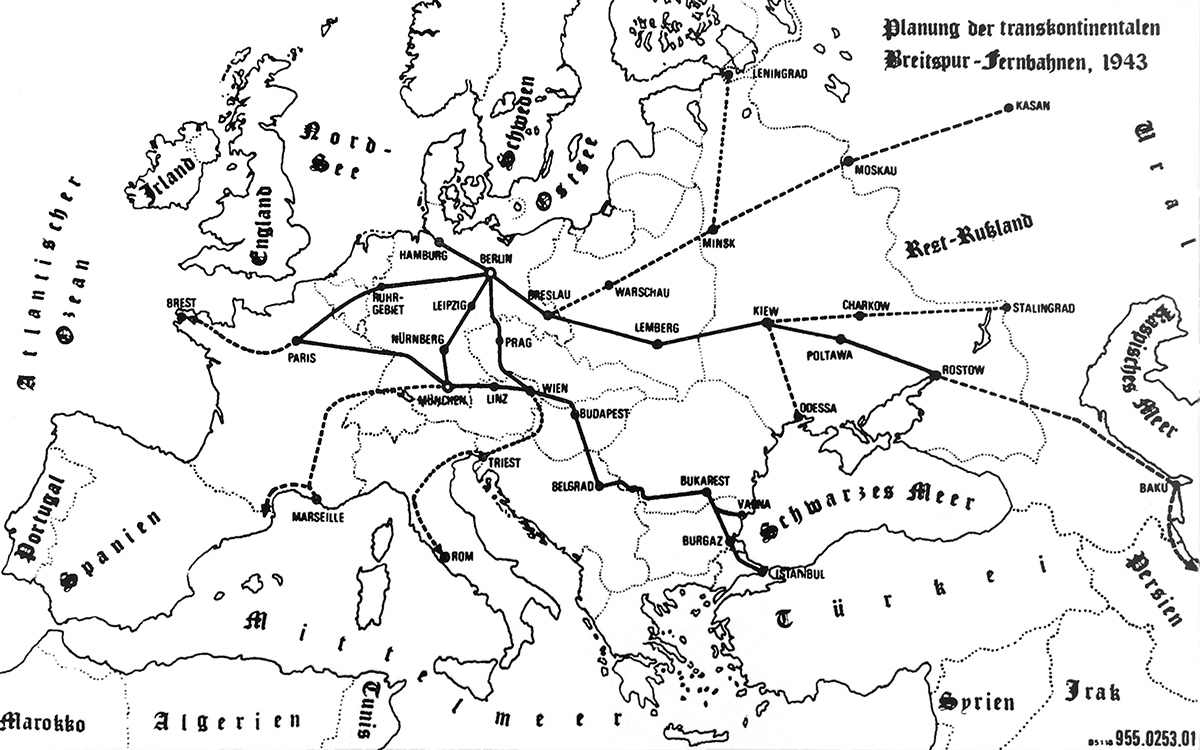
Super trains
Hitler’s trains are more popular. The giant double-decker trains that connect the Reich’s major cities on broad three-meter gauge tracks, called the Breitspurbahn, are fast, luxurious and affordable. Only a few hours and you’re in Paris, Vienna or Lemberg for a weekend getaway. Members of the Hitler Youth get a free Breitspurbahn travel pass to see the Reich when they turn eighteen.
Click here to learn more about Hitler’s super trains.

Eugenics
In Germany, eugenics and selective breeding are widespread with the purpose of improving the Aryan master race. People with congenital defects are removed from the gene pool. Those who are deemed to possess superior genes are encouraged to have as many children as possible. The result is a society obsessed with pure blood and building the Übermensch.
The Holocaust has been explained away officially as merely the relocation of the Jews to Eastern Europe, where communications and transportation are poor. Many Germans know better, but they are either indifferent or too afraid to speak up.
Some surviving Jews have escaped to Soviet territory, where they have provided testimony of the extermination efforts. The Nazis dismiss this as Bolshevik propaganda.
Draining the Mediterranean
The next step in creating living space the German people do not need is draining the Mediterranean.
First proposed by Herman Sörgel in 1929, the Atlantropa project would dam off the Strait of Gibraltar and the Dardanelles. A third dam, between Sicily and Tunisia, would further lower the Mediterranean’s sea level and create vast new areas of land. The Adriatic Sea would largely disappear, which is why Italy isn’t keen on the plan.
Click here to learn more about Atlantropa.
New Roman Empire
The modern Roman Empire stretches from Savoy in the northwest to Somaliland in the southeast. Albania, Corsica, Libya, Tunisia, the Sudan and Italian East Africa are integral parts of the new Italy while Croatia, Cyprus, Egypt and Greece are ruled by puppets.
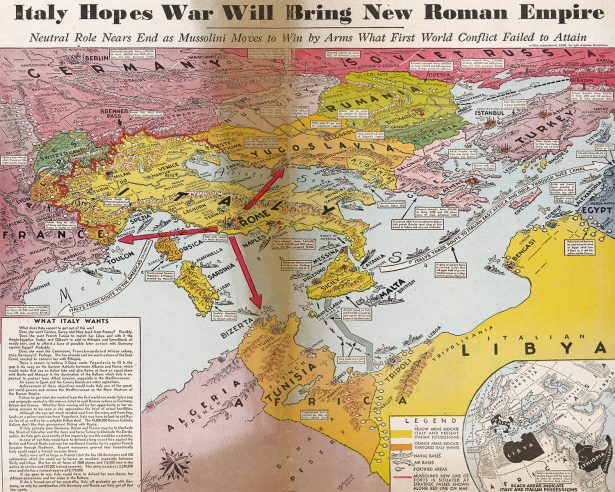
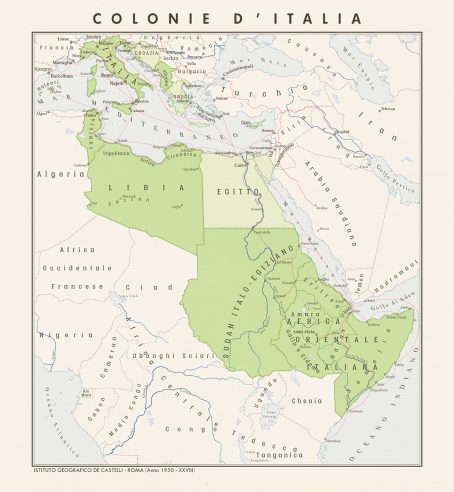
Benito Mussolini has expanded Rome itself with large neoclassicist neighborhoods in the style of the EUR.
Click here to learn about Mussolini’s new Rome.
In Hitler’s shadow

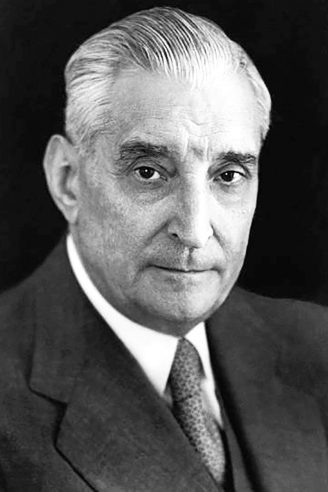
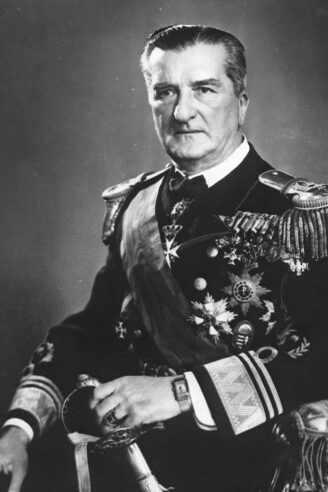
Europe’s other fascist dictators are content to live in Hitler’s shadow. The only ones who pursue an independent foreign policy are Spain’s Francisco Franco and Portugal’s António de Oliveira Salazar. Both came to power before the war.
Salazar is regarded warily by the Nazis. Portugal is the only country in Europe that recognizes continued British and French rule in Africa and Asia. Franco is considered more reliable, despite his refusal to give Gibraltar to the Reich.
Jozef Tiso still rules in Slovakia. Miklós Horthy has abolished the Regency in Hungary and formally established himself as dictator. In Bulgaria, Tsar Simeon II presides over a pliant, pro-German government. Michael I has become more powerful as king of Romania as Ion Antonescu’s health has failed. There are rumors that Antonescu has in fact died already, but that the regime cannot agree on a successor.
Antarctica base
In the late 1930s, German explorers discovered a large ice-free plateau in the Antarctic with more than 100 freshwater lakes and outlets to the sea. They dubbed the area the Schirmacher Oasis and started building a base there.
It is now the center for German military and scientific activity in the Southern Hemisphere, housing U-boats and Haunebu flying discs.
Click here to learn more about Nazis’ Antarctica base.
To the Moon
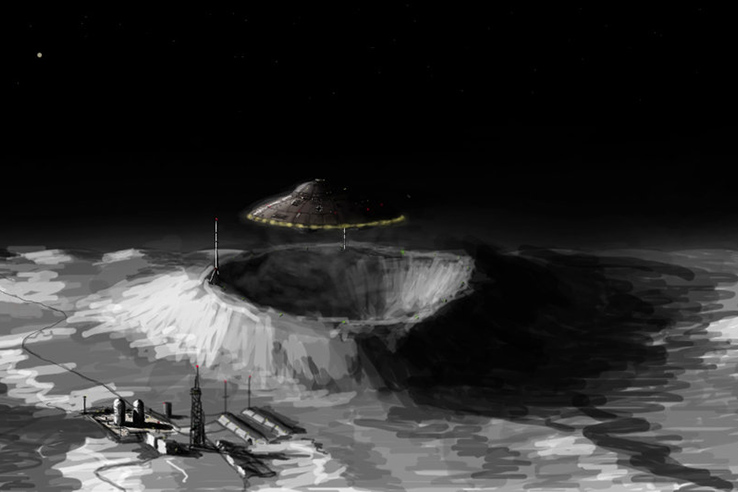
The next step is the Moon. Wernher von Braun leads a Nazi space program at Peenemünde. His rocket technology is also being used to develop long-range missiles that can reach North America. The hope is to put a man on the Moon before 1960. Robert Goddard leads the American rocket and space program.
Click here to learn more about the Nazi Moon base.
Nuclear power
All three superpowers have atomic weapons, but America, with the help of British, Jewish and Soviet scientists, has surpassed Japan and the Reich, detonating the world’s first hydrogen bomb in the Nevada desert in 1952.
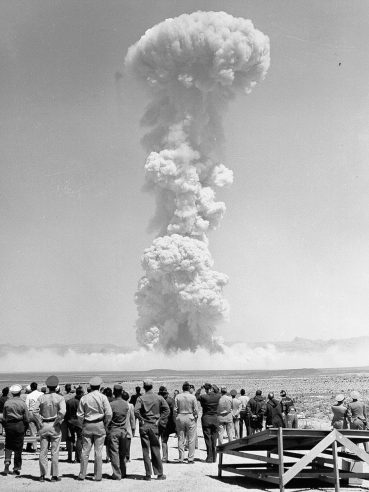
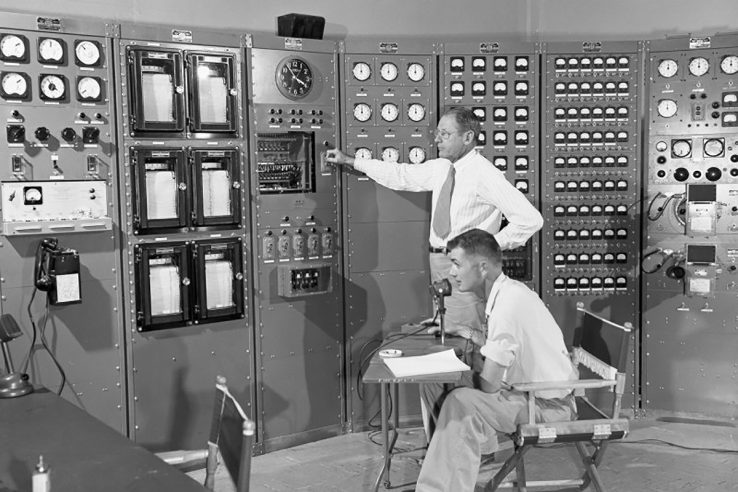
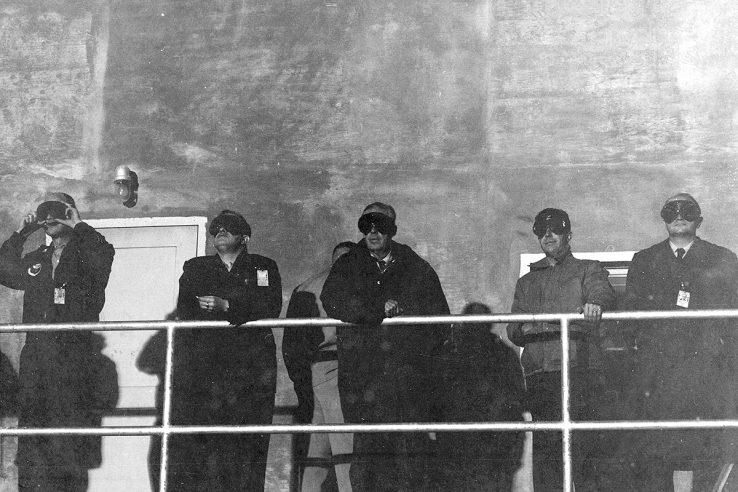
Airplanes
Germany built the first jet-powered fighter plane, the Messerschmitt Me 262. It also pioneered the flying wing. Supersonic German jets ferry civilians and officials between Tokyo and Berlin.
Click here for more strange aircraft of the Third Reich.
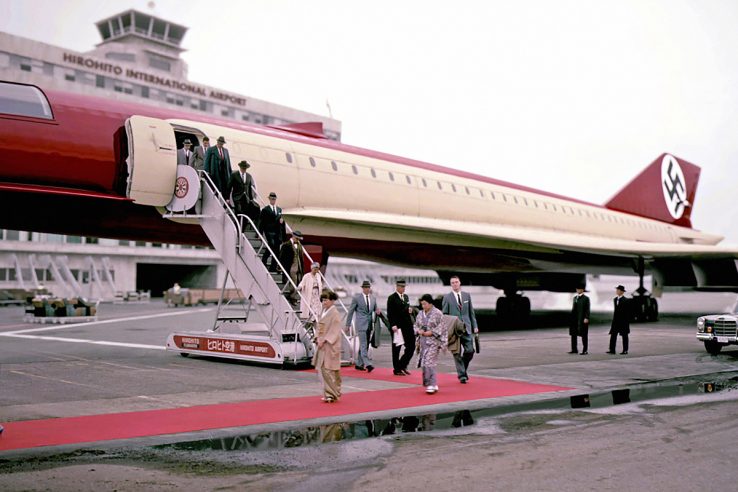
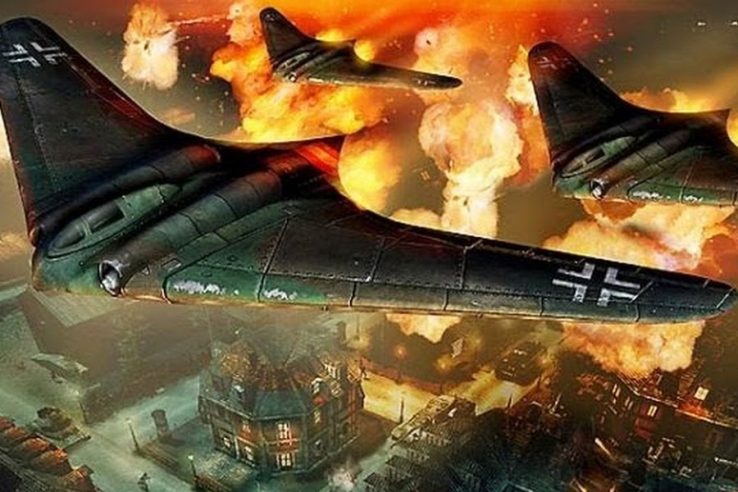
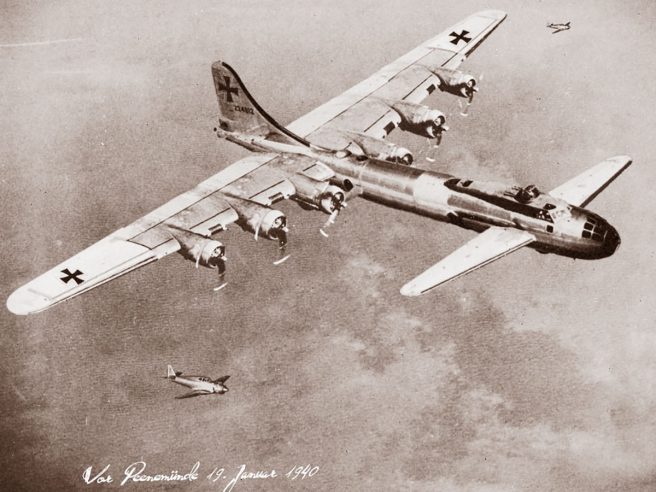
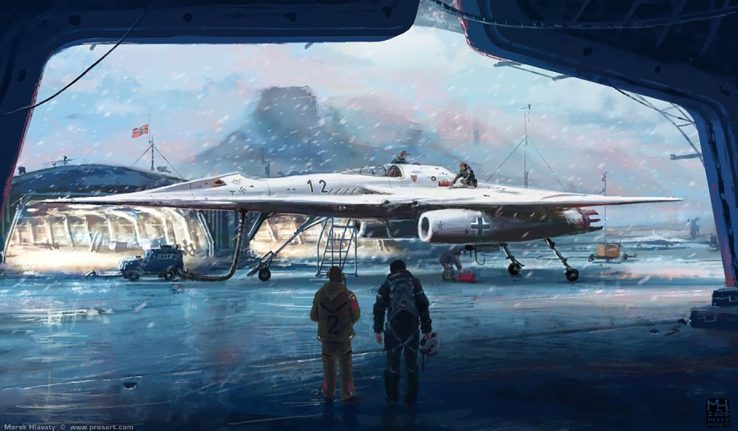
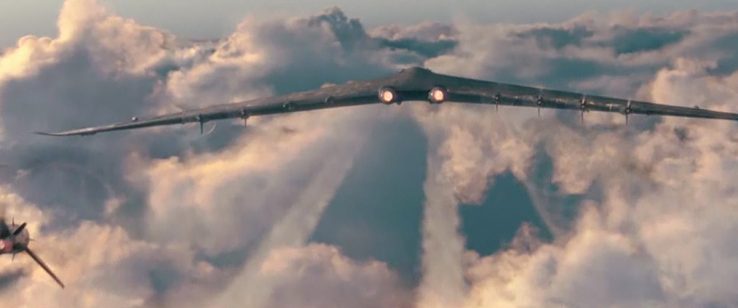
America has gone the atomic route. The first aircraft that was equipped with a small nuclear reactor was the Convair B-36 Peacemaker. North American Aviation is developing the XB-70 Valkyrie as a deep-penetration strategic bomber that would extend American deterrence around the globe.
Click here to learn more about America’s atomic-powered aircraft.
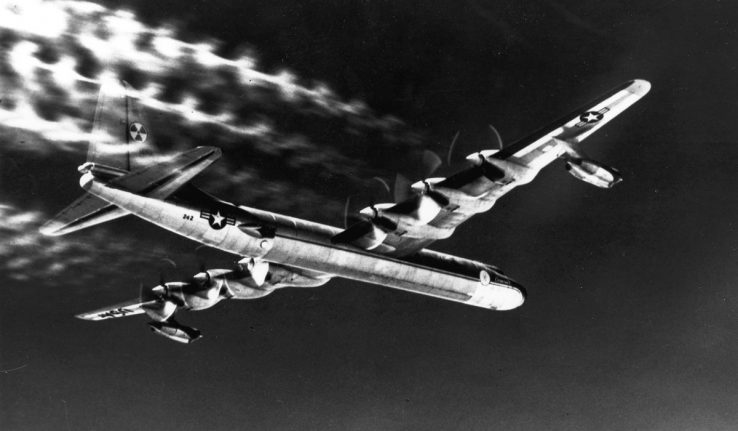
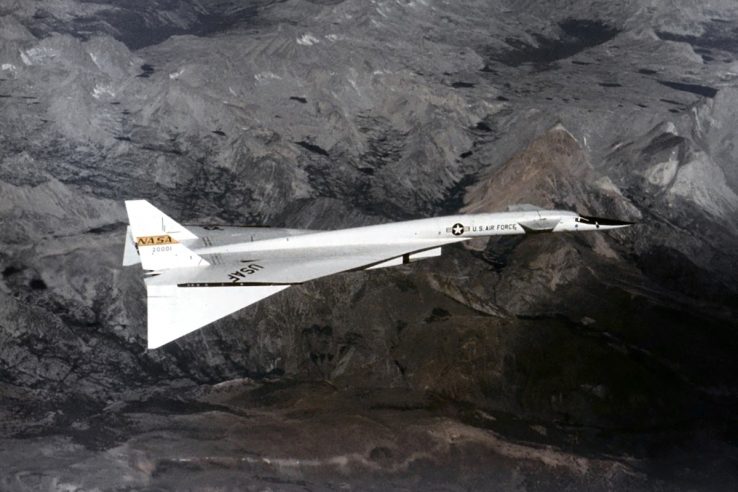
Landkreuzers
Hitler’s obsession with size has seen Germany develop impractically large tanks and guns. Landkreuzern (“land cruisers”) are really only deployable in the desert of the North Africa. Huge railway guns guard the Eastern Front but are an ill fit in the guerrilla war against the remnants of the Soviet Union.
Click here for more wonder weapons of the Third Reich.
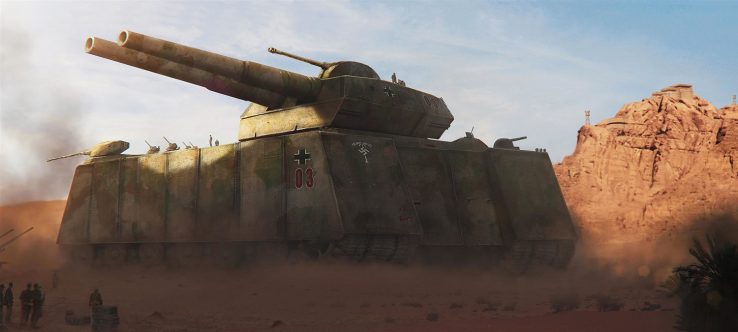




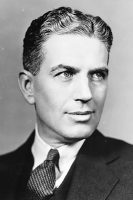
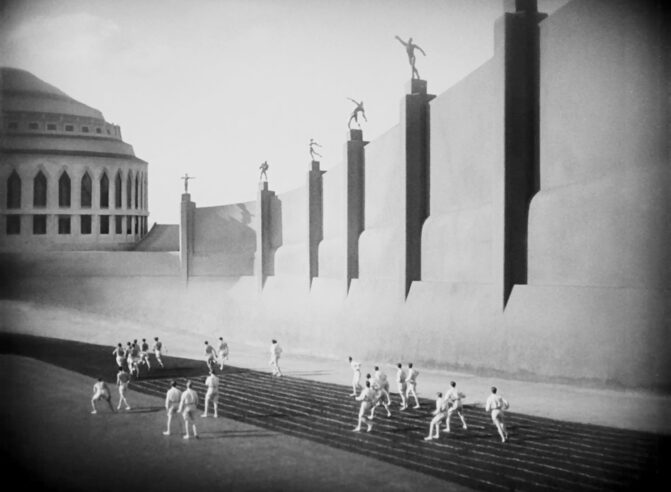
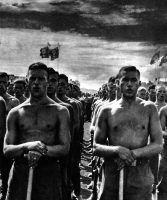
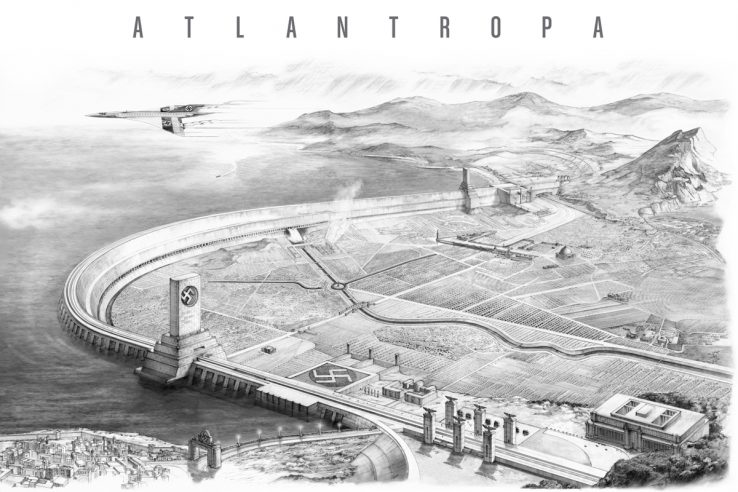
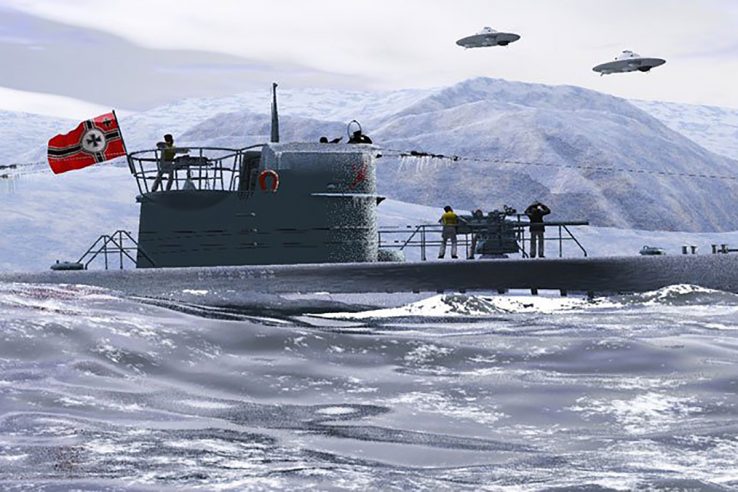
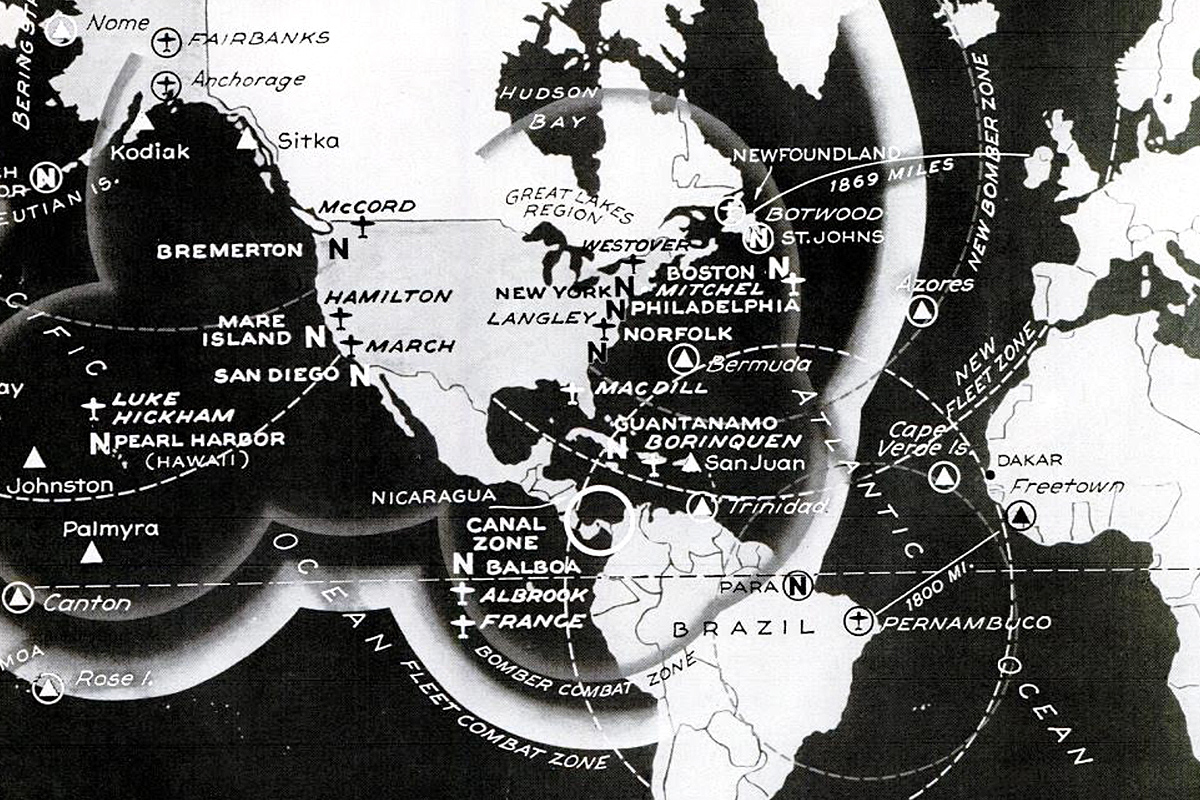
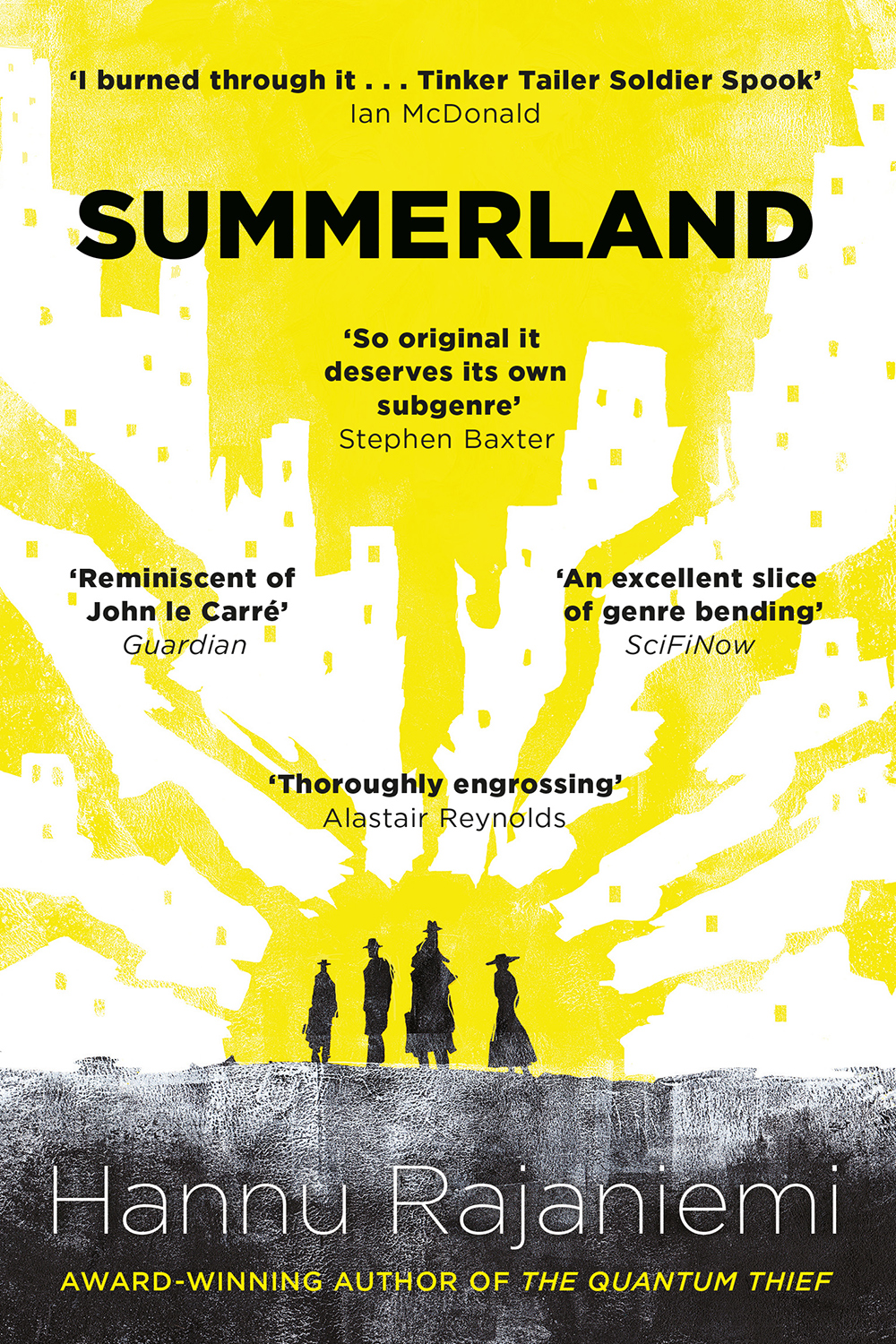

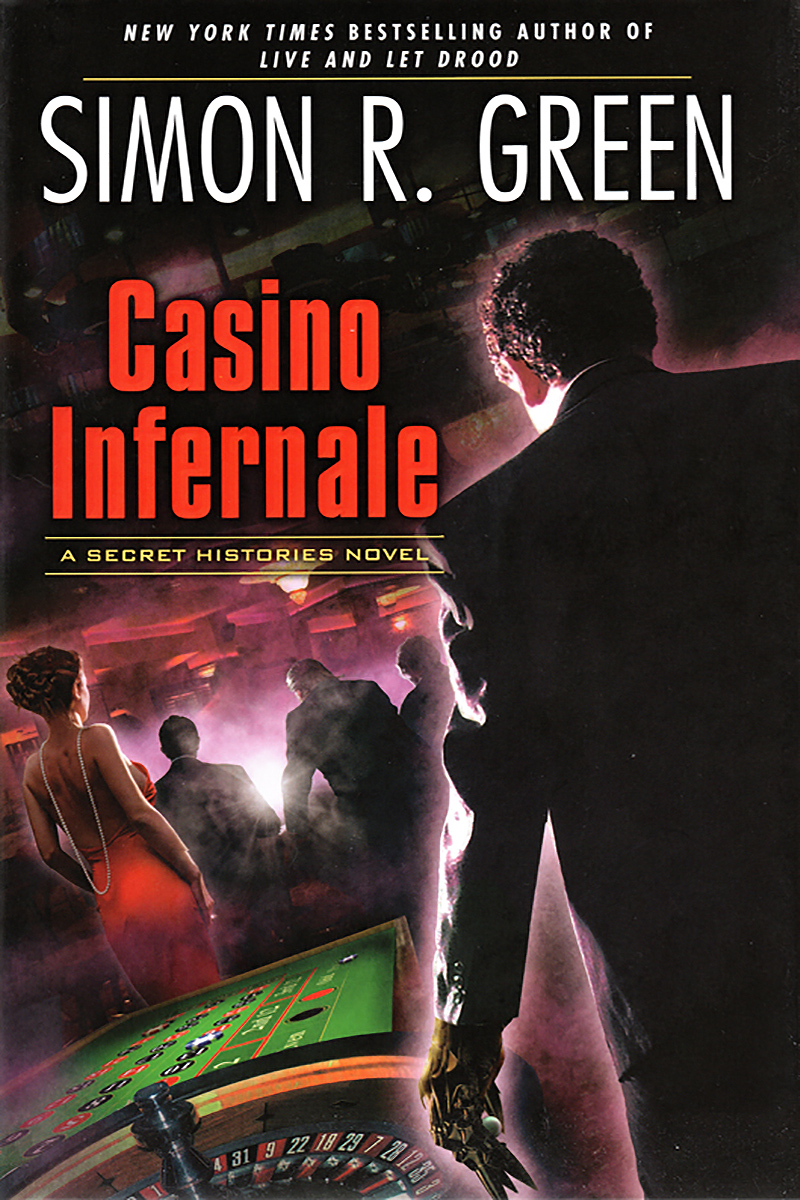
3 Comments
Add YoursThanks for all this! A treasure trove of possibilities and improbabilities.
Lost me at the germans dropping the bomb. You said the deviation was at Battle of Britain. Even if other things happen as written, the Germans would not have had the bomb by ’45. Yes they were working on it but they were not close to completing it nor had enough fissile material to use. Which essential negates everything from your timeline after that. Also, Japan was on their last leg by that point in ’45, even with Nazis backing them giving up all territory in the pacific is a stretch.
Thanks for your comment, Richard! You’re right the German nuclear project wasn’t very advanced – but this is alternate history. I think of these worldbuilding entries more as menus than coherent storylines; readers can pick and choose from them to make their own art, games and stories.